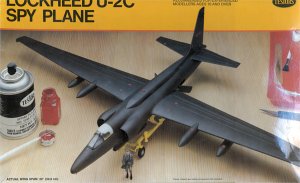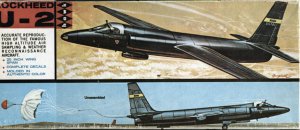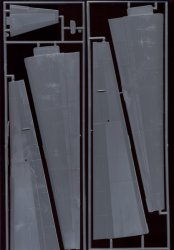Testors/Hawk 1/48 U-2 Spyplane - Another Look
By Michael Benolkin
 |

 |
 Hawk first released this kit 40 or so years ago as the U-2A. Somewhere along the way, the molds were updated into the U-2C configuration with enlarged intakes. Eventually the molds would also receive the dorsal hump. Testors acquired all of the kit molds when they purchased Hawk and issued these kits under the Testors label. The U-2C would become one of the longest running kits in injection molded history.
Hawk first released this kit 40 or so years ago as the U-2A. Somewhere along the way, the molds were updated into the U-2C configuration with enlarged intakes. Eventually the molds would also receive the dorsal hump. Testors acquired all of the kit molds when they purchased Hawk and issued these kits under the Testors label. The U-2C would become one of the longest running kits in injection molded history.


 Despite its age, the Testor's kit is just as crisp and clean as the original Hawk issue. The picture to the right shows the U-2C fuselage from the kit that is still available at most hobby shops. While the rest of the kit is identical to the shown parts above, the fuselage shows the added dorsal spine, the shorter and wider exhaust duct, and the fairings for the enlarged intakes.
Despite its age, the Testor's kit is just as crisp and clean as the original Hawk issue. The picture to the right shows the U-2C fuselage from the kit that is still available at most hobby shops. While the rest of the kit is identical to the shown parts above, the fuselage shows the added dorsal spine, the shorter and wider exhaust duct, and the fairings for the enlarged intakes.